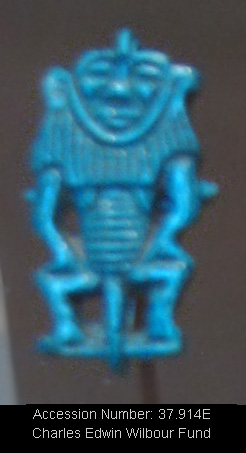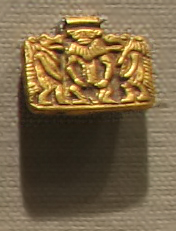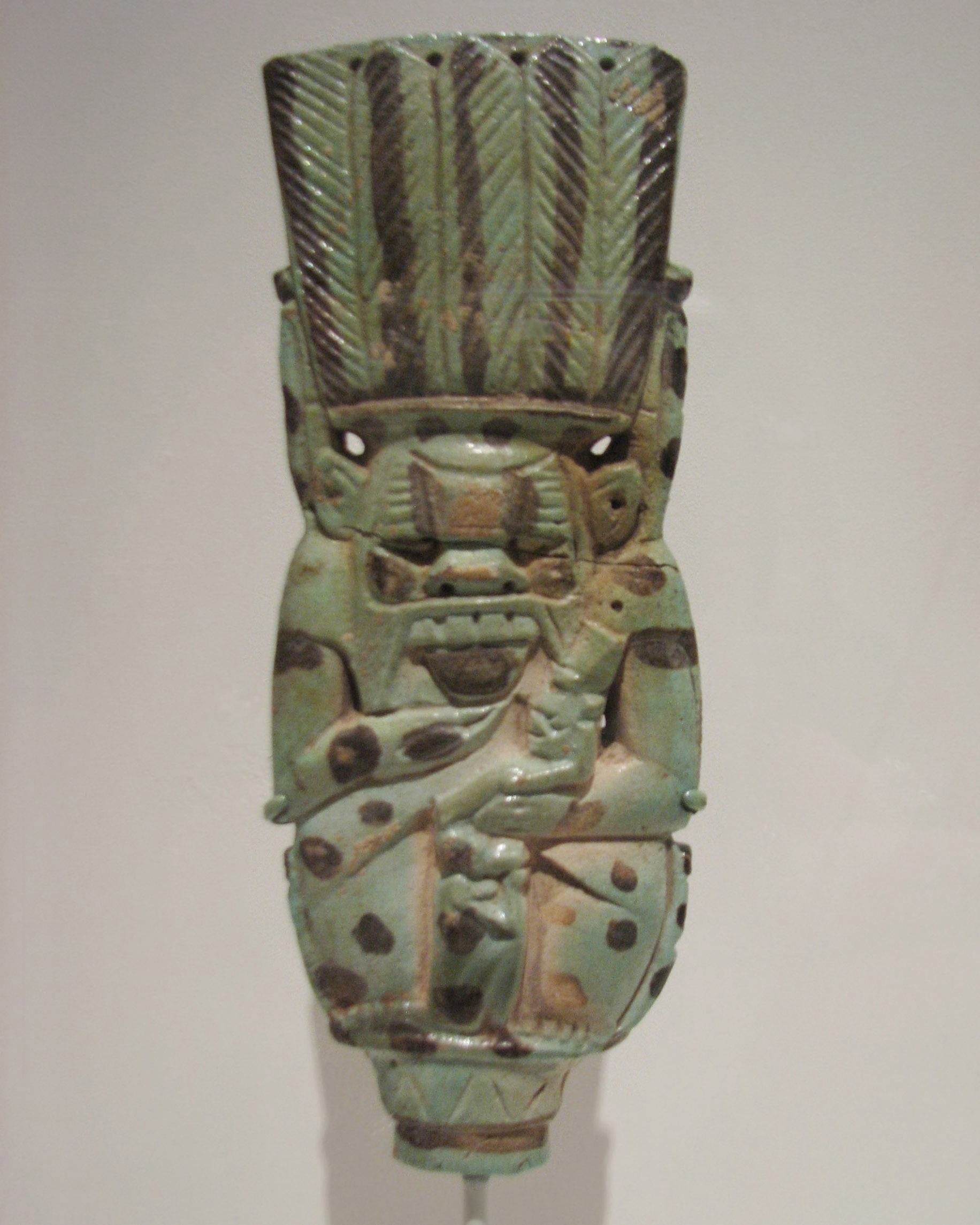(From museum website):
"Bes was a name applied to several deities represented as a sort of dwarf lion-man. The Bes-image's deities were, among other things, protectors of pregnant women, young children, and the newly born sun (the sun-god was believed to be reborn each day at dawn)."
Info from another Bes figure:
"In antiquity metal rings were inserted into the holes at the top of the headdress and through the pierced ears. When shaken like a rattle, the piece produced a rustling sound intended to soothe a crying baby."
Info from another Bes Amulet:
"Ancient Egyptian women wore amulets of birth gods to protect them during and immediately after childbirth. One of these birth gods, a female deity often known as Taweret, was shown with the head and body of a hippopotamus, lion's paws, and a stylized crocodile hanging down her back. Her male counterpart, commonly called Bes, usually appeared frontally. In early Dynasty 18, artists depicted Bes with a human face and a lion's body and mane."

Amulet in the Form of Bes-Image
Faience, 1 3/16 x 5/8 x 3/16 in. (3 x 1.6 x 0.5 cm)
Place Made: Egypt
New Kingdom, XVIII Dynasty, ca. 1539-1478 B.C.E.
Brooklyn #37.914E,
Charles Edwin Wilbour Fund
|
Here is another example of a Bes and Taweret amulet, this one from the Metropolitan Museum:

Appliqué with Bes flanked by figures of Taweret
Gold
Egypt, New Kingdom, Dynasty 18, 1550-1350 B.C.E.
MMA #15.6.13
Gift of Mrs. Frederick Thompson, 1915
|
This was caught in process of capturing another piece, seen here as well.



